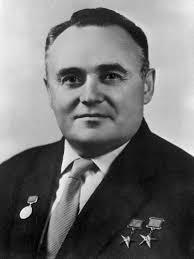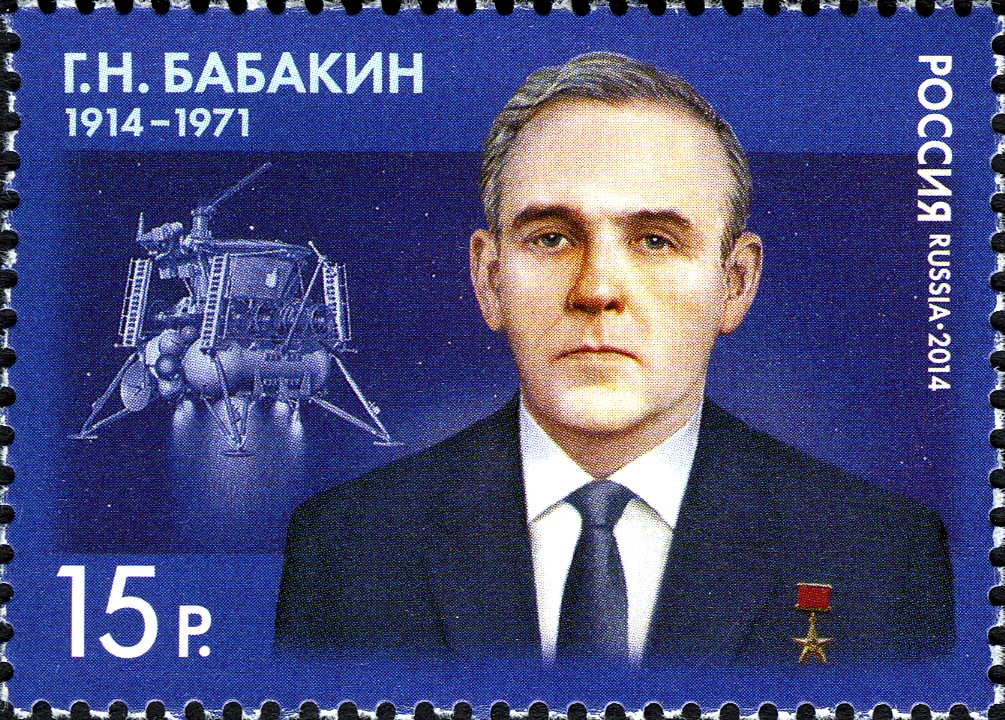In the USSR, the organization of the space sector is much less centralized. The design and production of prototypes for probes, launchers and satellites is carried out by design offices which are called OKB. Mass production is then carried out by factories which maintain privileged links with certain OKBs.
Officially, they were grouped under the authority of the military-industrial commission (VPK) and then the minister of mechanical constructions (MOM). It was these commissions that were responsible for assigning missions and budgets to the OKBs, but in practice well-placed contacts in the political apparatus could influence matters. This fragmented organization gave significant weight to the leaders (called general designer) of OKB. They imposed their views on the developments and their relations with the Soviet leaders made it possible to obtain funding or not. Some historical bosses marked their OKB so much that they often took their name unofficially then sometimes officially.
At the end of the Soviet era, these design offices were often grouped together with their factory. They later became private enterprises after the fall of the regime. It was only after the fall of the USSR that a space agency based on NASA‘s plans, Roscosmos, was created.
OKB-1 Energia
This design office has been indelibly marked by Serguei Korolev. This charismatic designer is the most significant figure in the Soviet space program. Under his leadership, the OKB-1 began by developing ballistic missiles, therefore the famous R-7 semiorka. On the basis of this missile which became a launcher, the OKB 1 created a family of launchers which continues today the Soyuz launchers. With such a capacity, the OKB1 created the first satellites and then a large number of exploration probes (until 1965). This design office was also the center of human exploration with space station modules and all of the Soviet and Russian manned vessels.
The OKB1 has its launchers produced at Samara’s No. 1 aviation plant, now TsDKB Progress. This design office was also responsible for developing the Soviet manned moon program with the N1 rocket which accumulated problems. Korolev did not have time to notice this failure, because he died in early 1966 due to complications during a medical operation. It is his eternal second, Vassili Michine, who takes over the management of the design office. But he does not have the charisma and political backing of Korolev and fails to save the lunar program.
In 1974, the office was taken over by another of the great Soviet engineers, Valentin Glousko. He was the greatest Soviet engine designer at the head of the OKB 465. He often objected to Korolev over these technical choices and the types of propellants used. When he arrives at OKB1, he cancels the N-1-based lunar project and launches a new permanent lunar base project that does not have time to complete. Indeed, faced with the arrival of the American space shuttle, the Soviet leader asked for a similar system which would be nicknamed Bouran launched by the Energia rocket. The program ended with a perfect automatic flight of the energy-bouran couple in 1988 but was canceled due to the collapse of the USSR.
The OKB-1 survives the Soviet system and becomes the private company RKK energia which produces the Soyuz launchers and spacecraft as well as the progess cargo ships and the Zvezda module of the ISS. For the future, RKK energia is working on a future module for the ISS, the Federadsia spacecraft and the Soyuz-5 and Soyuz-7 launchers still with Tsdkb Progress.

Sergei Korolev, the boss of Russian space (source)
OKB 301 Lavotchkine
The OKB 301 is inseparable from Semion Lavochkin who developed the famous series of LaGG-3 / La5 / La7 fighter aircraft during the Second World War. After the war, he designed the last Soviet propeller fighter planes and a jet fighter, the La15. Even if a prototype based on the La15 is the first Soviet aircraft to break the sound barrier, it fails to develop a production aircraft with this capability. In parallel, the OKB 301 is working on several surface-to-air missiles which became a real threat to American aircraft during the Vietnam War.
It was during a missile test that Semion Lavochkin died of a heart attack in 1960. The OKB 301 became the OKB Lavochkin and continued his work on the missiles, but came under the authority of the OKB52 in 1962. The situation changed at the end of 1965, when the overloaded OKB1 decided to get rid of the robotic exploration program which accumulated failures.
It’s OKB Lavochkin, once again independent and devoid of space experience, which takes responsibility for the programs of lunar, Venusian and Martian exploration. The new chief, Gueorgui Bababine, is a telecommunication engineer who worked very early on radar tracking systems. He joined the OKB 301 as part of missile programs and worked with Lavochkin until his death. The OKB Lavochkin achieves many historic firsts by resuming the design of the probes, testing them further and using the new Proton launcher.
Among these exploits we can cite the first probe to reach another planet (Venera 3), first soft landing on the Moon (Luna 9) Venus (Venera 7) and Mars (March 3), first autonomous rover on another astronomic body ( Lunakod 1) and first automatic return of samples from another astronomic body (Luna 16). Babakine will not see the successful landing (closely followed by a loss of communication) of Mars 3 because he died of a heart attack in August 1971. In just 6 years in the space sector, he wrote among the beautiful pages of Soviet and world planetary exploration.
OKB Lavotckine is continuing the work but with ever smaller budgets. The Mars program ended in 1973 and Luna in 1975. Only the exploration of Venus occurred until 1983 within the Venera program. The exploration continues until 1984 with the Vega missions which study Venus before going to fly over Halley’s comet. In 1988, the Phobos 2 probe observed Mars for a long time but lost contact with the approach of its final objective, the satellites of Mars Phobos.
After the fall of the USSR, two other Martian missions were attempted (Mars 98 in 1998 and Phobos-grunt in 2011), both of which were lost due to a launcher failure. The OKB Lavochkin, which has become the private company NPO Lavochkin, survives by marketing the Fregat stage, derived from the propulsion block of the Phobos probes and various satellite programs.

